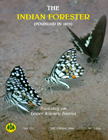Impact of Shrimp Farming and Salt Production Practices on Mangrove Forests Destruction in Bangladesh
DOI:
https://doi.org/10.36808/if/2006/v132i12/4300Abstract
Shoreline and offshore islands of Cox's Bazar District (Bangladesh) supported dense and scattered natural mangrove vegetation. Huge mangrove plantations have also been established on the exposed coastline. Naturally occurring mangroves have virtually vanished due to shrimp farming, expansion of salt production area and various forms of human pressure. Recently created mangrove plantations are also under severe stress for similar reasons and in the process of deterioration. Adequate measures should to be taken for the rehabilitation and conservation of mangroves. Coastal environment needs to be rationally utilized for sustainable production of various resources and maintenance of stable ecosystems.Downloads
Download data is not yet available.
Downloads
Published
2006-12-01
How to Cite
Siddiqi, N. A., & Alam, M. J. (2006). Impact of Shrimp Farming and Salt Production Practices on Mangrove Forests Destruction in Bangladesh. Indian Forester, 132(12), 1570–1580. https://doi.org/10.36808/if/2006/v132i12/4300
Issue
Section
Articles
License
Unless otherwise stated, copyright or similar rights in all materials presented on the site, including graphical images, are owned by Indian Forester.





